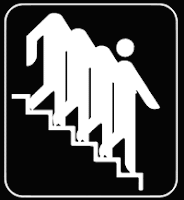For most of us, the Internet is a lifeline for communicating and connecting with the outside world. But as the Wall Street Journal reports, the Internet is now also an art gallery. One of the aspects that draws artists to this new medium is the ability to reach a broad audience. As sculptor turned Internet artist Ken Goldberg states, “While art is usually restricted to museums, galleries and private collectors, Internet art can be looked at all the time by anyone.”
For example, the benefactor of a recently purchased Goldberg piece—which arrived not on a canvas or in a frame, but on a silver encased flash drive—isn’t the only person able to view the work. Goldberg’s “internet-based earthwork,” which shows the constantly shifting and changing seismic activity of San Francisco’s Hayward Fault, can also be seen by the general public at his Web site.
Belgrade-born Internet artist Vuk Ćosić created an online gallery of pictograms designed to represent iconic art historical themes—artists and subjects in their simplest and slightly ironic forms—as airport signage. History of Art for Airports is available online as well as at the Threshold Artspace in Scotland, where Ćosić is headlining an exhibit.
These artists are embracing one of the goals of our corporate history business: to make history accessible. Not so long ago this aspiration referred solely to tactile products, such as books and exhibits. And while these are still mainstays in our business, the rise of Internet art highlights the fact that historical interpretation is facing a new frontier of accessibility and production.
And just like the Internet artists, The History Factory welcomes the benefits (and challenges) this new frontier brings. We recently published our first digital publication—a founder’s history residing on the company’s Web site. By foregoing the typical book format, this company fulfilled two important goals: quick and cost-effective production and expanded readership. Just as with Internet art, viewers can access this publication anytime and anyplace, without incurring the extra cost to the company of having to physically ship books to outlying offices and constituents.
Historical exhibits are also beginning to employ interactive and digital formats, as several History Factory clients have requested interactive exhibit walls (I-walls) as opposed to the typical exhibit display cases. These viewer-directed exhibits still rely on historic materials to tell their stories, but instead of printing content on display cards, we use a flat computer screen for exhibit interpretation. The screen is mounted in front of the exhibit on a rail, and viewers can move the screen up and down the rail. New content appears onscreen as the monitor changes location on the rail. This new spin on exhibition display allows for a far more interactive viewer–exhibit relationship, as the interpretation relies on the viewer’s movement of the monitor. In addition, the use of a computer screen greatly increases the curator’s ability to use graphics and digital media, which is limited in a typical exhibit format.
The ever-expanding use of new digital formats not only increases the public’s ability to experience art and history, but also broadens our scope of work as a company. As we continue to utilize technological advancements to help our clients bring their stories greater life and wider audiences, we’ll also be expanding our own skills, knowledge, and definition of what our product is.
 |
 |
| Vuk Ćosić, Duchamp, 2009 | Vuk Ćosić, Venus, 2009 |
| Ćosić’s interpretation of Marcel Duchamp’s 1912 painting Nude Descending a Staircase (No. 2) and the Venus de Milo (late 2nd century BCE, attributed to Alexandros of Antioch) as airport signage. | |
Robin Lawrence, Associate, The History Factory
